Most of us have childhood memories of a treehouse – a place to escape the world and enjoy imaginary exploits. Treehouses are also a great way to teach children about nature and are a healthy alternative to digital games
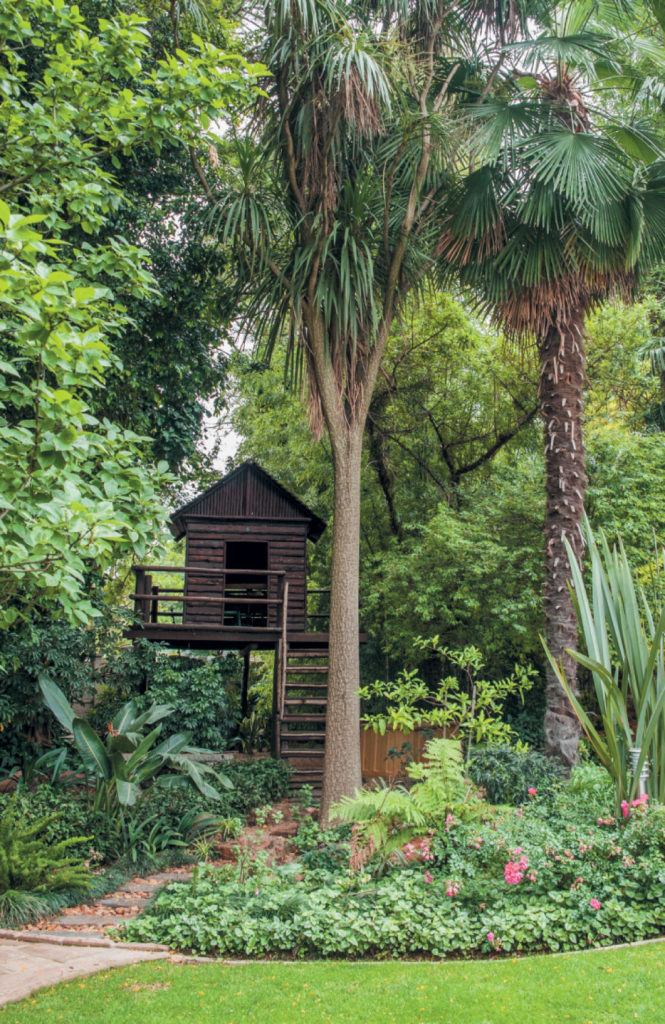
If you don’t have a suitable tree, build a freestanding treehouse amongst the trees.
Location
Whether you’re building a treehouse yourself or employing a professional, you need to find the right location. “Most South African gardens don’t have big trees strong enough to house the traditional storybook treehouses,” says Mike Schwartz of Rustic Timber. “The answer is to build one on stilts, incorporating the best tree in the garden into the design, as much as possible.”
“A tall tree with a straight trunk isn’t ideal because it’s difficult to climb. Rather opt for one that has branches at a bit of an angle but is still sturdy,” says Nick St Julien of The Tree House Guy. For very young children, building above 1,5m off the ground can be hazardous. Ideally, select a tree that’s capable of being surrounded by multiple levels. Start off low and then expand higher up into the tree as the children get older.
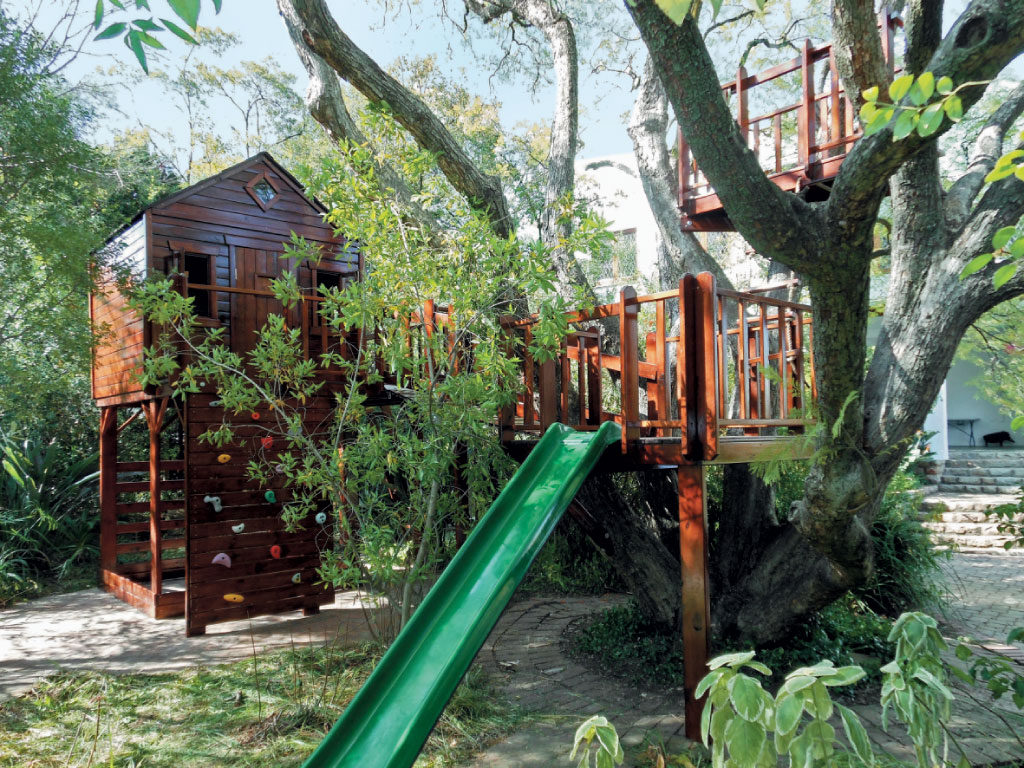
Constructed by Benny’s Creative Woodworkz, this treehouse has a climbing wall and platforms built at different heights.
“If your treehouse is tucked away at the back of your garden, include paths through flowerbeds for easy access,” advises Felicity Teixeira from Blue Petal Garden Design.
Design
As treehouses are custom made, you can add all sorts of features from fixed suspension bridges to climbing walls. You can decide if you want the windows to open and if access will be via steps, a ladder, a rope or all three.
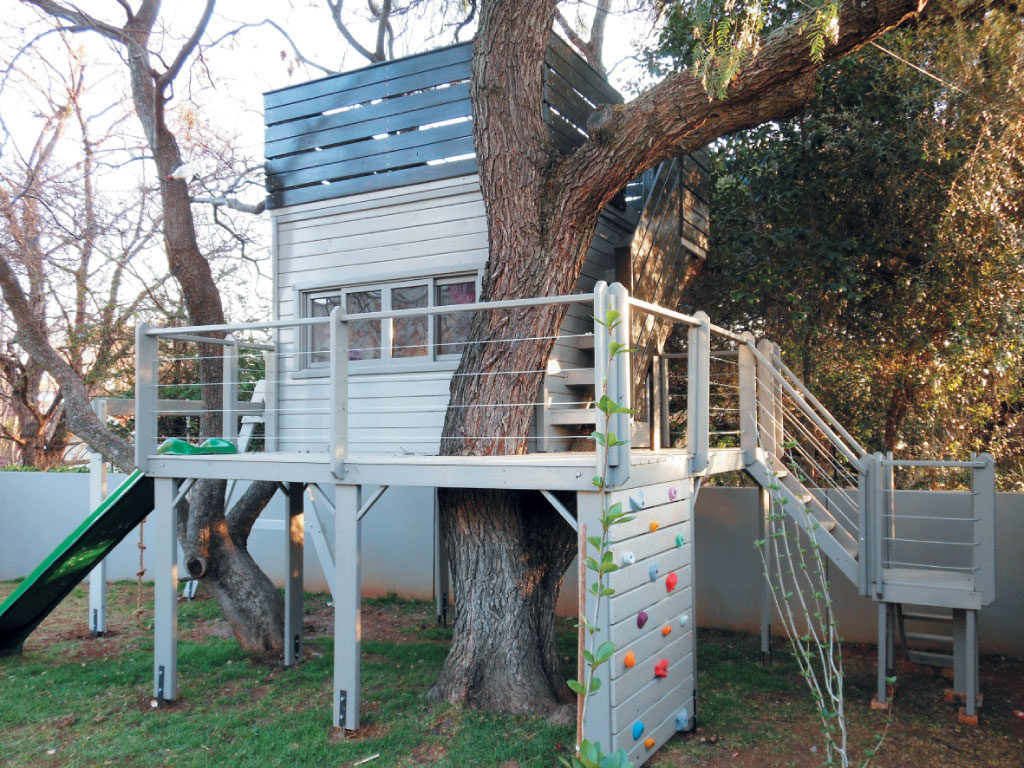
Benny’s Creative Woodworkz built this modern waterproof treehouse with a top deck and climbing wall.
“Make it as natural as possible by bolting the stairs to the tree,” says Nick. “In my experience, most children like to climb on things and it adds to the sense of adventure.”
Construction
“While you can use the tree’s structure, the main supporting beams should be made from industrial pine, anchored with steel anchors and then concreted into the ground,” says Benny Janssens of Benny’s Creative Woodworkz.
“After cutting the wood to size and drilling holes, treat the wood with two coats of a preservative before actually building,” advocates Nick. “This way you can ensure your treatment goes into the holes and over every square inch of wood, making it more durable.” He also recommends treating it a third time after the structure is built.

This treehouse by JC Gardens & Climbing Frames featured at the Chelsea Flower Show in London.
If you’re working on a tight budget, Nick suggests using Waxsol. “This is affordable, waterproof, smells better than creosote, keeps bugs out, nourishes the wood and is widely available,” he says. Another suitable product is Woodoc 50.
Safety
Safety is of paramount importance when creating structures for children. “Depending on the height of the treehouse, you’ll need to make sure that a fall is either cushioned by a soft mulch or artificial lawn on the ground below, or use railings to prevent falling altogether,” advises Benny Janssens.
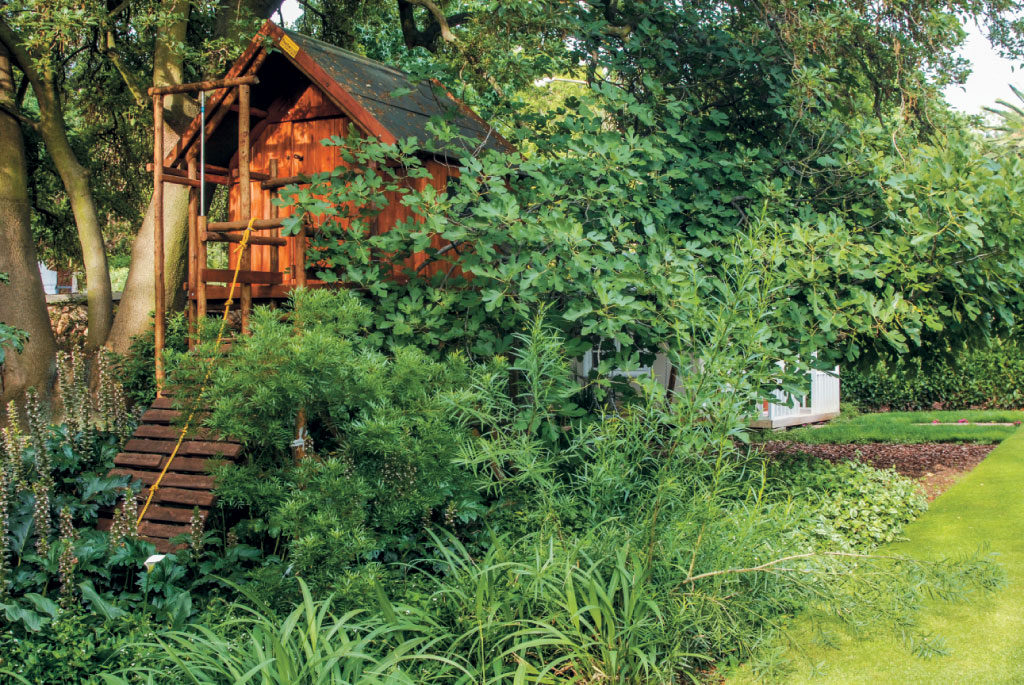
Incorporating the surrounding vegetation into the structure adds a sense of adventure.
Railings on platforms and stairs should be high enough with small gaps between the posts so that children can’t fall through or over them. See-through Perspex is a good alternative for glass in windows.
“Safety during the actual construction is also important, especially if you’re building around a tall tree,” says Nick.
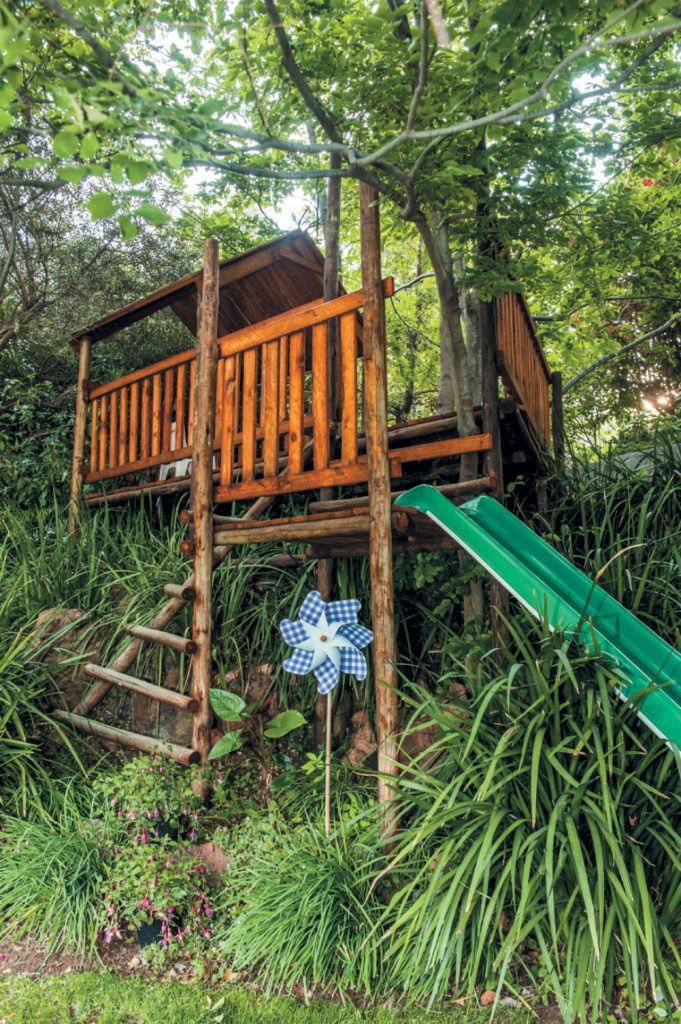
Where possible, use the natural slope of the garden to make different levels and include steps and a slide.
St Julien. “Use a safety harness and wear a helmet.” He recommends using the fall arrest system. “This is a rope that’s been curled up inside a plastic sheath, allowing a short fall of only about half a metre.”
Maintenance
With any wood used outdoors, general maintenance is a given. “To protect your investment, I suggest giving your treehouse a once-over annually with a good wood treatment product,” says Mike Schwartz.
Look out for tree growth that needs trimming, especially on fast-growing varieties and make sure any furry or feathered friends haven’t damaged the structure.

This treehouse by Benny’s Creative Woodworkz has a suspension bridge, a rope ladder and swings.

